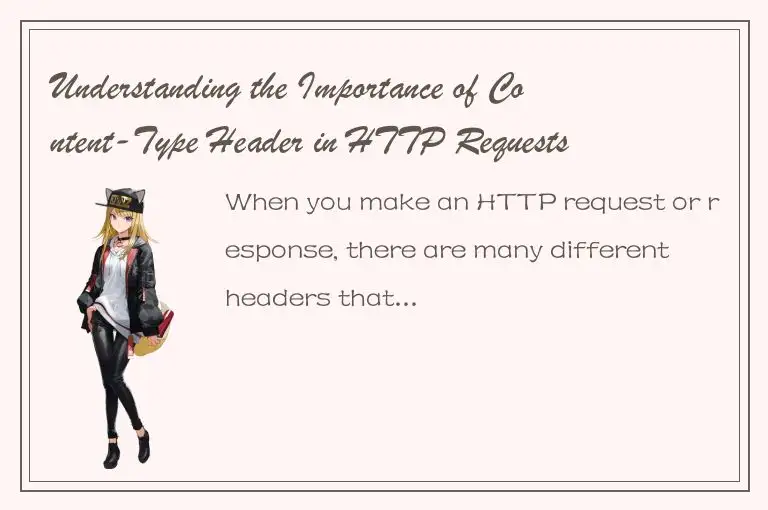When you make an HTTP request or response, there are many different headers that you can include. One of the most important headers is the Content-Type header, which specifies the MIME type of the data that is being transferred. Understanding the importance of the Content-Type header can help you avoid common issues with HTTP requests and responses.

What is MIME?
MIME, or Multipurpose Internet Mail Extensions, is a protocol that allows different types of data to be transmitted over the internet. Essentially, MIME specifies a standard way to encode data that works across different platforms and applications.
MIME types are identified by a string of characters that indicate the type of data being transmitted. For example, the MIME type for HTML documents is "text/html", while the MIME type for JPEG images is "image/jpeg".
Why is the Content-Type header important?
When you make a request or response with HTTP, it's important to specify the correct MIME type so that the data can be properly encoded and decoded. If the Content-Type header is not specified, or is specified incorrectly, the recipient may not be able to interpret the data correctly.
For example, imagine that you're sending an image file as part of an HTTP response. If you specify the Content-Type header as "text/plain", the recipient may try to display the image as plain text, which will not work. Likewise, if you send an HTML document with the wrong Content-Type header, the recipient may not be able to properly render the page.
In addition to ensuring that data is properly encoded and decoded, the Content-Type header can also help prevent security vulnerabilities. For example, if an attacker tries to send malicious data to a web application, the Content-Type header can help the server identify and reject the data.
Common MIME types
There are many different MIME types that can be used to identify different types of data. Here are a few of the most common MIME types:
- text/plain: Used for plain text documents.
- text/html: Used for HTML documents.
- image/jpeg: Used for JPEG images.
- image/png: Used for PNG images.
- application/json: Used for JSON data.
- application/xml: Used for XML data.
- application/pdf: Used for PDF documents.
- application/octet-stream: Used for binary data.
How to specify the Content-Type header
When you make an HTTP request or response, you can specify the Content-Type header using one of two formats. The first format is to include the MIME type directly in the header, like this:
Content-Type: text/html
The second format is to include a charset parameter, which specifies the character encoding that should be used to interpret the data. For example:
Content-Type: text/html; charset=utf-8
In addition to specifying the Content-Type header, it's also important to ensure that the data being transferred is properly encoded. For example, if you're sending data as part of an HTTP request, you may need to URL encode the data to ensure that special characters are properly escaped.
Conclusion
The Content-Type header is a crucial part of HTTP requests and responses. By specifying the correct MIME type, you can ensure that data is properly encoded and decoded, and prevent security vulnerabilities. Take the time to properly specify the Content-Type header in your HTTP requests and responses, and you'll avoid many common issues with data transmission over the internet.




 QQ客服专员
QQ客服专员 电话客服专员
电话客服专员